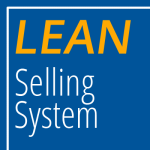What are the major challenges facing sales organizations today?
The primary challenges have been, and continue to be, achieving or exceeding the company’s revenue and customer acquisition targets, and being able to rapidly scale up the sales machine, profitably. Feeding these primary challenges are several significant sales-related challenges that are symptoms of tactical or strategic misalignment.
- How to increase the value salespeople add for potential buyers.
- How to reduce the length of sales cycle: the elapsed time from when a salesperson first engages with a potential buyer until the time the sale is closed
- How to reduce or eliminate time wasted (by both buyers and sellers) on unnecessary activities and unqualified prospects
- How to accurately forecast revenue
- How to establish competitive advantage and differentiation above and beyond that already provided by the product or service delivered
What are the major causes of these challenges in sales organizations today?
The causes vary widely depending on the type and maturity of the company, but there are a number of common problems that exist broadly across the sales spectrum.
- Sales is often treated as a craft profession (depends on individual skills or personality “gifts”) rather than a process with best practices. This results in wildly varying performance among individual salespeople, an inability to see and remove defects in the process, and an inability to scale up the sales organization.
- The steps in the sales process are poorly understood and poorly documented (if at all), leading to different salespeople engaging with buyers differently.
- The steps in the sales process are “siloed” among individuals, often from different departments or functions, with a weak definition of roles, responsibilities, and expectations of each participant. There is little or no teamwork.
- Communication among participants in the sales process is poor, leading to a lack of coordination of efforts, wasted time, and missed sales opportunities.There is a lack of data to measure individual or team process performance at any level or step other than closed sales.
- There is no collective agreement on the value that the company provides to its end customer. There may not be—anywhere in the company—an accurate understanding of how customers value the company and its products or services.
What Is the 90-Day Plan for a Lean Selling Transformation?
The 90-day Plan is based on the book, Lean Selling, by Robert J. Pryor. The purpose of this program is to demonstrate measurable improvement in one of the Sales Improvement Objectives that your team agreed upon.
Process and Deliverables:
- Facilitation and training of internal staff on implementation of Lean Selling methodologies including the acquisition and application of data for decision making, problem analysis and resolution, and rapid implementation of solutions
- Implementation of a Lean Selling process improvement program to move toward Sales Improvement Objectives
- Development of required infrastructure and the internal implementation of a system to provide management reporting on KPIs related to Sales Improvement Objectives
- An internally self-sustaining Lean Selling system that has been customized to the company’s unique requirements and that can be continuously improved by internal staff
(For an in-depth outline of what the 90-Day Plan includes, see Chapter 28 of Lean Selling: Slash Your Sales Cycle and Drive Profitable, Predictable Revenue Growth by Giving Buyers What They Really Want, by Robert J. Pryor.)
